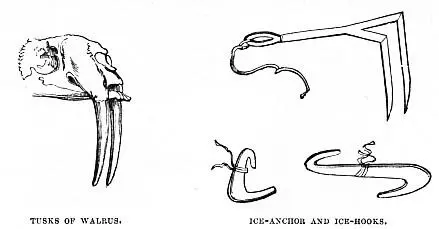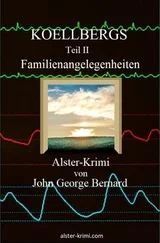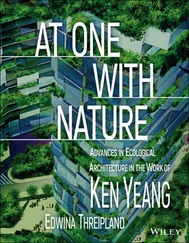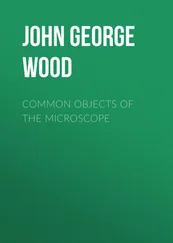John George Wood - Nature's Teachings
Здесь есть возможность читать онлайн «John George Wood - Nature's Teachings» — ознакомительный отрывок электронной книги совершенно бесплатно, а после прочтения отрывка купить полную версию. В некоторых случаях можно слушать аудио, скачать через торрент в формате fb2 и присутствует краткое содержание. Издательство: Иностранный паблик, Жанр: foreign_antique, Природа и животные, foreign_edu, на английском языке. Описание произведения, (предисловие) а так же отзывы посетителей доступны на портале библиотеки ЛибКат.
- Название:Nature's Teachings
- Автор:
- Издательство:Иностранный паблик
- Жанр:
- Год:неизвестен
- ISBN:нет данных
- Рейтинг книги:5 / 5. Голосов: 1
-
Избранное:Добавить в избранное
- Отзывы:
-
Ваша оценка:
- 100
- 1
- 2
- 3
- 4
- 5
Nature's Teachings: краткое содержание, описание и аннотация
Предлагаем к чтению аннотацию, описание, краткое содержание или предисловие (зависит от того, что написал сам автор книги «Nature's Teachings»). Если вы не нашли необходимую информацию о книге — напишите в комментариях, мы постараемся отыскать её.
Nature's Teachings — читать онлайн ознакомительный отрывок
Ниже представлен текст книги, разбитый по страницам. Система сохранения места последней прочитанной страницы, позволяет с удобством читать онлайн бесплатно книгу «Nature's Teachings», без необходимости каждый раз заново искать на чём Вы остановились. Поставьте закладку, и сможете в любой момент перейти на страницу, на которой закончили чтение.
Интервал:
Закладка:
By accident the thread became broken, and the stick, which was about as thick as an ordinary pencil, and not quite three inches in length, fell to the ground. The Spider immediately descended, attached another thread, and hauled it up as before. In a day or two, when the tempestuous weather had ceased, the Spider voluntarily cut the thread, and allowed the then useless stick to drop.
A curious example of the elastic cable is seen in the egg-case of the Dog-fish, which is given on page 35. The egg-case is formed like that of the common skate, and has a projection from each of its angles. But the projections, instead of being mere flattened horns, are lengthened into long elastic strings, tapering towards the ends, and twisted spirally, like the tendrils of a grape-vine.
These tendril-like appendages twist themselves round seaweeds and other objects, and, on account of their spiral form, can hardly ever be torn from their attachments. Sometimes after a storm the egg is thrown on the shore, still clinging to the seaweed, but to find an egg detached is very rarely done.
I have already mentioned the tendrils of the vine, and their great strength. The reader may remember the corresponding cases of the Pea and the Bryony, the latter being a most remarkable example of the strength gained by the spiral form. It clambers about hedges, is exposed to the fiercest winds, has large and broad leaves, and yet such a thing as a Bryony being blown off a hedge is scarcely, if ever, seen. I never saw an example myself, though I have had long experience in hedges.
Another excellent example of this principle is found in the Vallisneria plant, which of late years has become tolerably familiar to us through the means of fresh-water aquaria, though it is not indigenous to this country.
In this plant the elastic power of the spiral cable is beautifully developed. It is an aquatic plant, mostly found in running waters, and has a most singular mode of development. It is diœcious— i.e. the male, or stamen-bearing, and the female, or pistil-bearing flowers, grow upon separate plants.
It has to deposit its seeds in the bed of the stream, and yet it is necessary that both sets of flowers should be exposed to the air and sun before they become able to perform their several duties. Add to this the fact that the male flower is quite as small in proportion to the female as is the case with the lac and scale insects, and the problem of their reaching each other becomes apparently intricate, though it is solved in a beautifully simple manner.
Fertilisation cannot be conducted by means of insects, as is the case with so many diœcious terrestrial plants, and it is absolutely necessary that actual contact should take place between them. This difficult process is effected as follows:—
The female flowers are attached to a very long spiral and closely coiled footstalk, and, when they are sufficiently developed, the footstalk elongates itself until the flower rests on the surface of the water, where it is safely anchored by its spiral cable, the coils yielding to the wavelets, and keeping the flower in its place.
Meanwhile the tiny male flowers are being developed at the bottom of the river, and are attached to very short footstalks. When they are quite ripe they disengage themselves from their footstalks, and rise to the surface of the river. Being carried along by the stream, they are sure to come in contact with the anchored female flowers. This having been done, and the seeds beginning to be developed, the spiral footstalk again coils itself tightly, and brings the seeds close to the bed of the stream, where they can take root.
There are other numerous examples, of which any reader, even slightly skilled in botany, need not be reminded, most of them being, in one form or another, modifications of the leaf or the petal, which, after all, are much the same thing. The vine and passion-flower are, however, partial exceptions.
I may here mention that soon after the failure of the first Atlantic telegraph cable, an invention was patented of a very much lighter cable, enclosed in a tube of india-rubber, and being coiled spirally at certain distances, so that the coils might give the elasticity which constitutes strength. The cable was never made, its manufacture proving to be too costly; but the idea of lightness and elasticity, having been evidently taken from the spiral tendrils of the bryony, was certainly a good one, and I should have wished to see it tried on a smaller scale than the Atlantic requires.
As a natural consequence, after the cable comes the Anchor, which in almost every form has been anticipated by Nature, whether it be called by the name of anchor, kedge, drag, or grapnel.
On the accompanying illustrations are shown a number of corresponding forms of the Anchor, together with a few others, which, although they may not necessarily be used in the water, are nevertheless constructed on the same principle— i.e. for the purpose of grappling.

One of the most startling parallels may be seen on the right hand of the illustration, the figure having been drawn from an old Roman coin. On the other side of the same illustration may be seen an anchor so exactly similar in form, that the outline of the one would almost answer for that of the other. This object is a much-magnified representation of a spicule which is found on the skin of the Synapta, one of the so-called Sea-slugs, which are so extensively sold under the name of Bêche de Mer. It forms one of the curious group called the Holothuridæ.
Each of these anchors is affixed to a sort of open-worked shield, as shown above, and on the left hand; and it is a curious fact that in the various species of Synapta the anchor is rather different in form, and the shield very different in pattern. They are lovely objects, and I recommend any of my readers who possess a microscope to procure one. They need a power of at least 150 diameters to show their full beauties.
An ordinary Grapnel is here shown, and in the corresponding position on the opposite side is an almost exactly similar object, except that it is double, having the grapnel at both ends of the stem. This is a spicule of a species of sponge, and is one of the vast numbers of which the sponge principally consists.

Next to the sponge-spicule is a still more perfect example of a natural Grapnel. This is the head of an internal parasite called Echinococcus, which holds itself in its position by means of the circle of hooks with which the head is surrounded. These hooks are easily detached, and have a curious resemblance to the claw of the lion or tiger.
On the left-hand side is a representation of a parasitic crustacean animal called Lernentoma, which adheres to various fishes, and is mostly found upon the sprat, clinging to the gills by means of its grapnel-shaped head.
On the right hand of the accompanying illustration is an ice-anchor, copied from one of those which were taken out in the Arctic expedition of 1875. Opposite is the skull of the Walrus, the tusks of which are said to be used for exactly the same purpose. Below are ice-hooks, also used for the same expedition.

The next illustration exhibits a butcher’s hook and a common porter’s hook, by which he lifts sacks on his back; and opposite them are some sponge-spicules, the similarity of which in form is so remarkable that the former might have been copied from the latter.
Читать дальшеИнтервал:
Закладка:
Похожие книги на «Nature's Teachings»
Представляем Вашему вниманию похожие книги на «Nature's Teachings» списком для выбора. Мы отобрали схожую по названию и смыслу литературу в надежде предоставить читателям больше вариантов отыскать новые, интересные, ещё непрочитанные произведения.
Обсуждение, отзывы о книге «Nature's Teachings» и просто собственные мнения читателей. Оставьте ваши комментарии, напишите, что Вы думаете о произведении, его смысле или главных героях. Укажите что конкретно понравилось, а что нет, и почему Вы так считаете.












